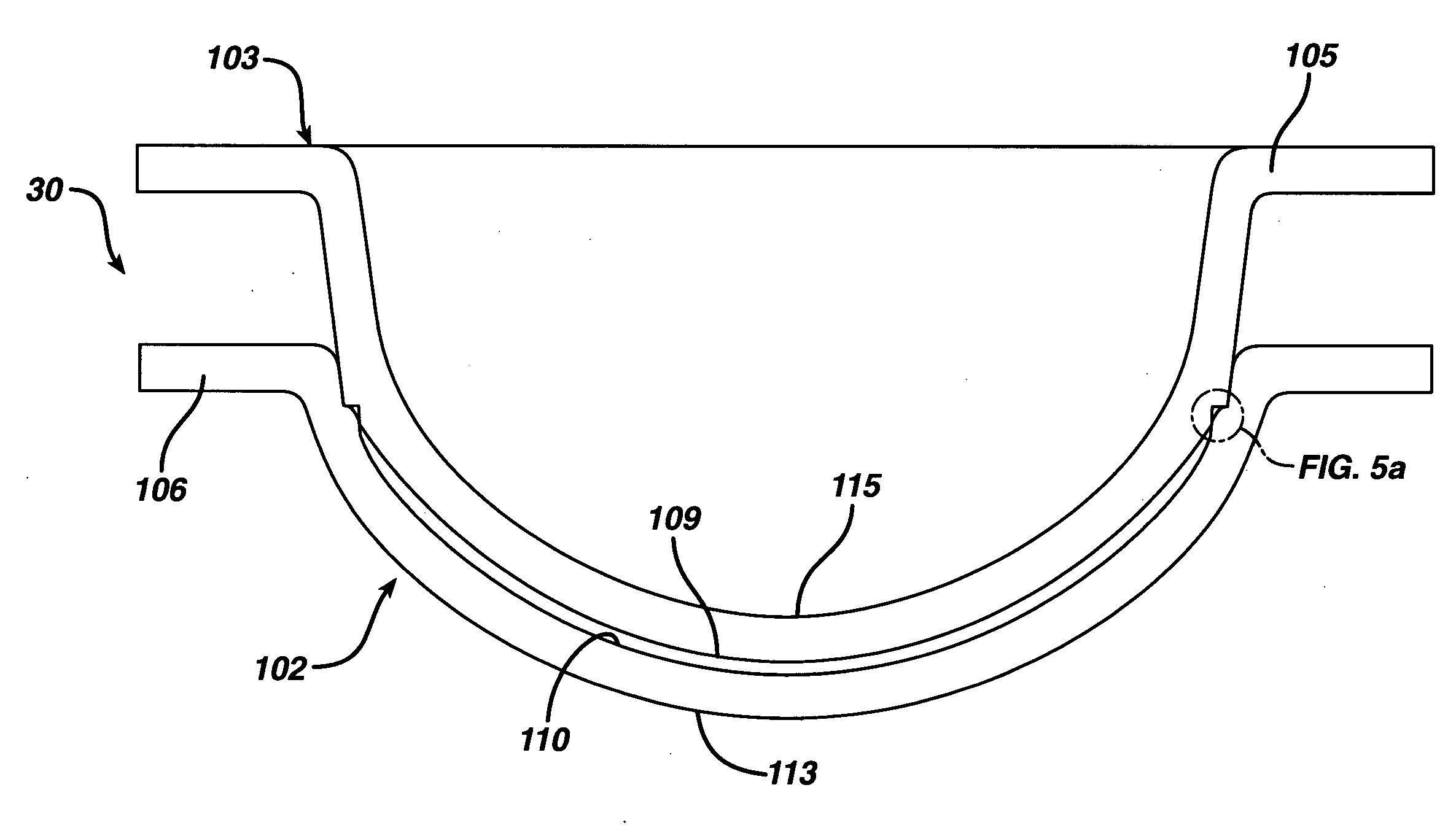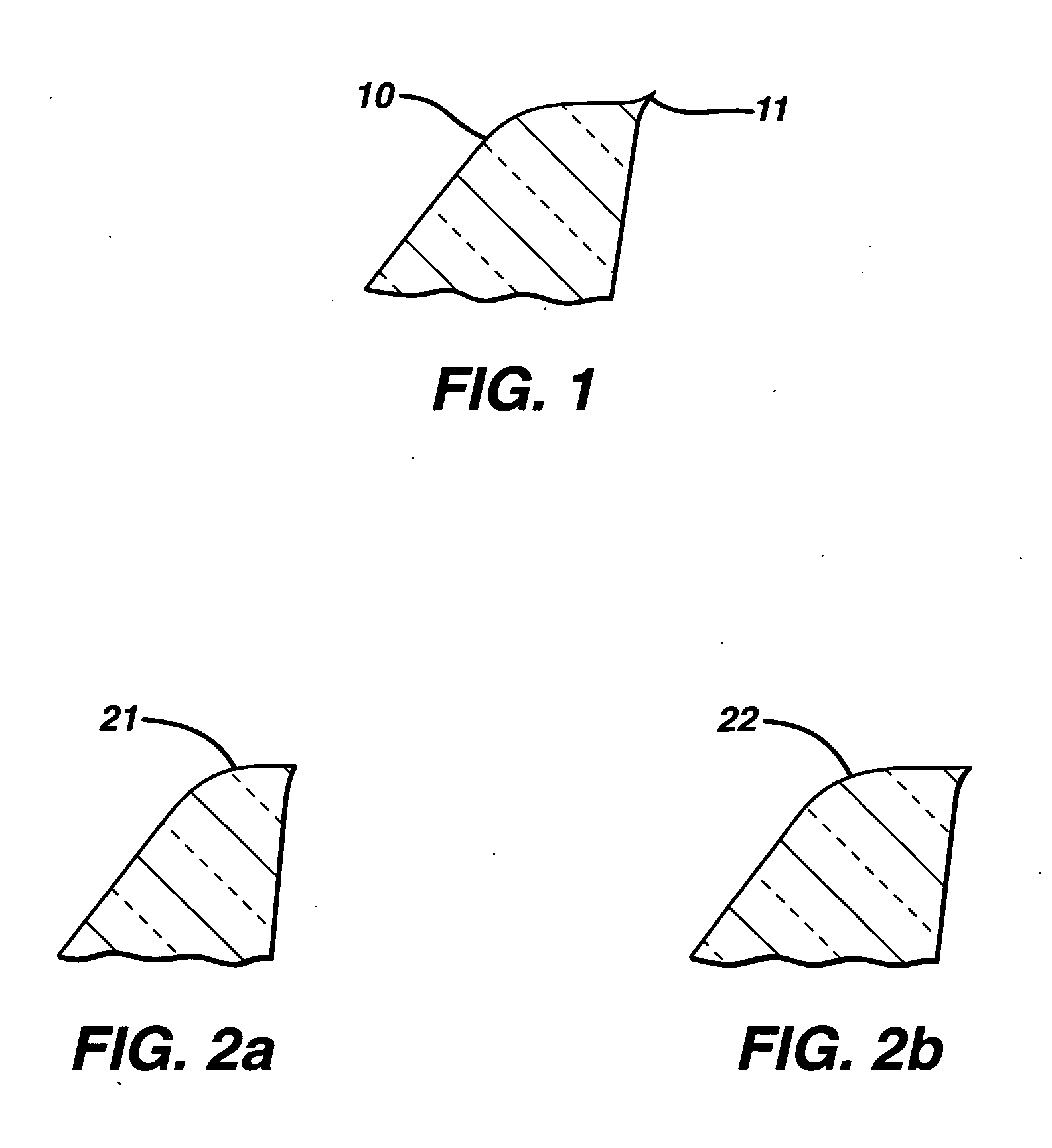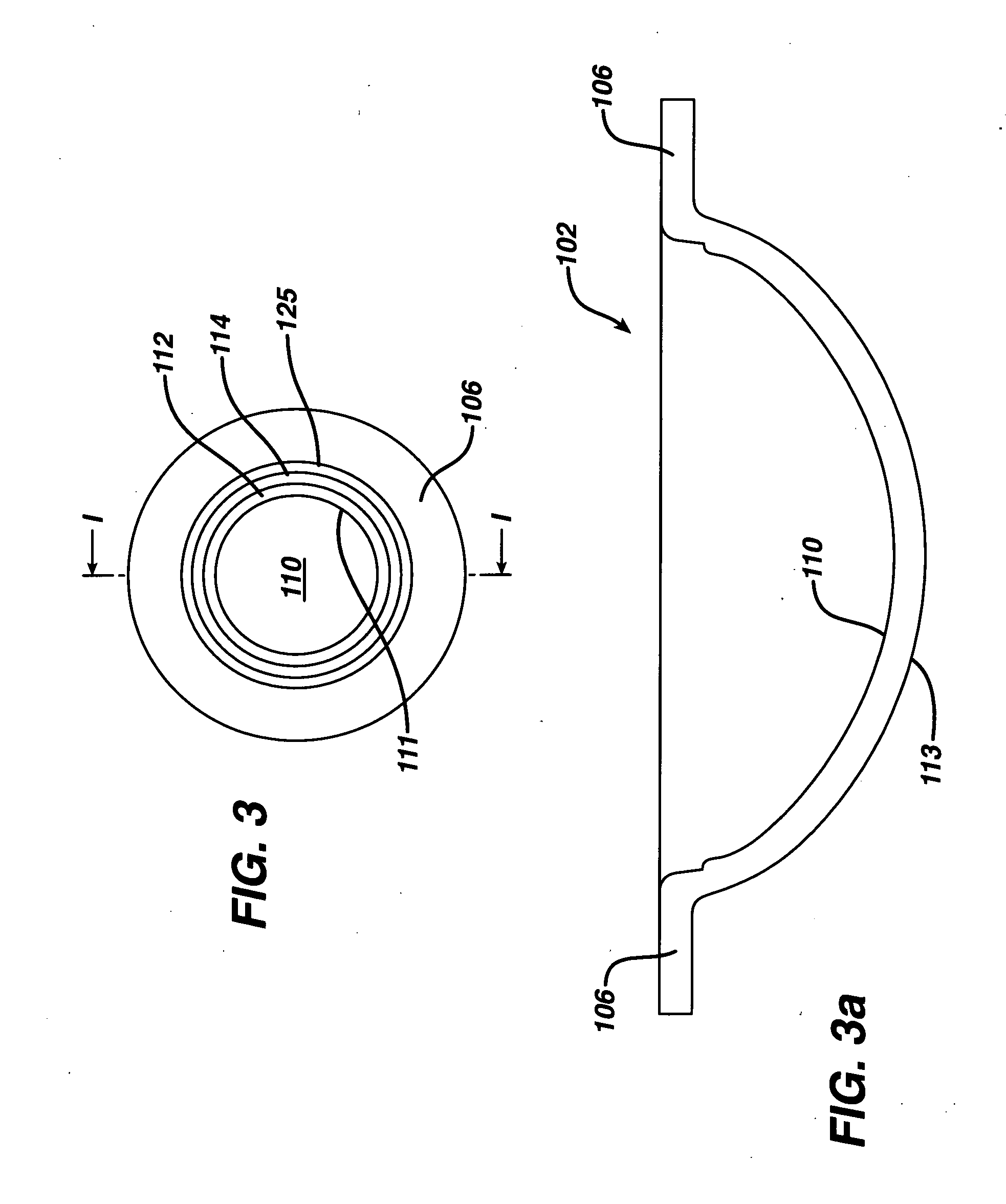Molds for use in contact lens production
a technology for contact lenses and molds, which is applied in the manufacture of lenses, butter, printing, etc., can solve the problems of surface roughness, discomfort, and the inability to produce lens edges without seams
- Summary
- Abstract
- Description
- Claims
- Application Information
AI Technical Summary
Benefits of technology
Problems solved by technology
Method used
Image
Examples
Embodiment Construction
[0013] The molds of the invention permit formation of a contact lens having a seamless edge. Additionally, mold half movement is decreased in the molds of the invention resulting in the production of lenses with reduced edge variation. It is a discovery of the invention that these results can be in which there is attained by providing a mold with a shoulder stop and a seam-matching feature.
[0014] In one embodiment, the invention provides a mold for production of a contact lens comprising, consisting essentially of, and consisting of a front curve mold half and a back curve mold half wherein each of the mold halves has a shoulder stop and a conical seam.
[0015] Referring to FIGS. 3, 3a, and 5a, front mold half 102 is shown with convex surface 113 spaced generally parallel and apart from concave surface 110 and an essentially uniplanar annular flange 106. Flange 106 is integral with guidewall 125 and extends radially outwardly from the surfaces 110 and 113 in a plane normal, or perpe...
PUM
| Property | Measurement | Unit |
|---|---|---|
| angle | aaaaa | aaaaa |
| angle | aaaaa | aaaaa |
| angle | aaaaa | aaaaa |
Abstract
Description
Claims
Application Information
 Login to View More
Login to View More - R&D
- Intellectual Property
- Life Sciences
- Materials
- Tech Scout
- Unparalleled Data Quality
- Higher Quality Content
- 60% Fewer Hallucinations
Browse by: Latest US Patents, China's latest patents, Technical Efficacy Thesaurus, Application Domain, Technology Topic, Popular Technical Reports.
© 2025 PatSnap. All rights reserved.Legal|Privacy policy|Modern Slavery Act Transparency Statement|Sitemap|About US| Contact US: help@patsnap.com



